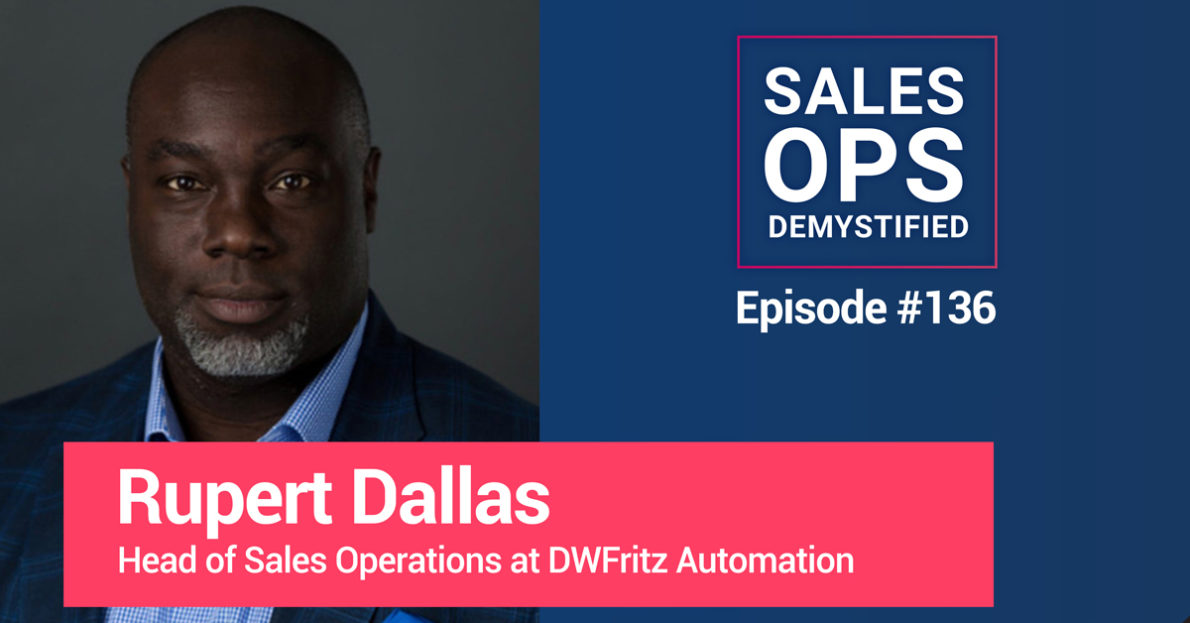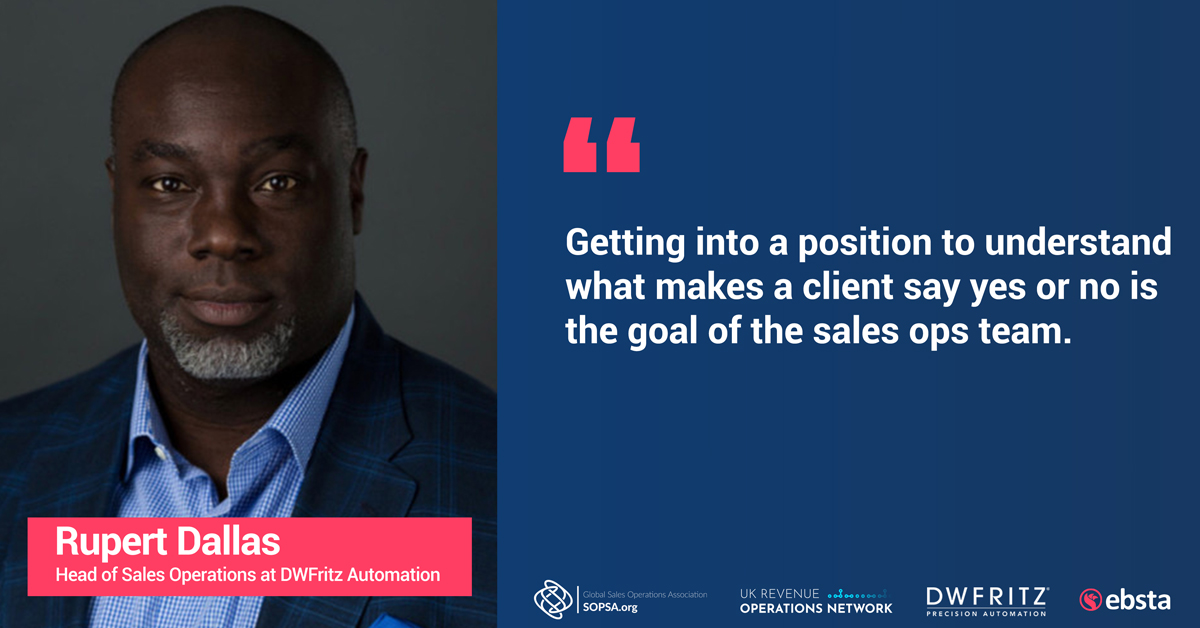Table of Contents
Share this article
Learn from the brightest minds how to predictably and efficiently grow revenue.
Related Content
37% ‘Data-Driven’ Growth in Under 12 Months ft. Shianne Sampson
In this episode of Revenue Insights, host Guy Rubin, CEO of Ebsta, sits down with Shianne Sampson, Global VP of Sales at Eventbrite, to explore how data-driven decision making, structured coaching, and intentional leadership can turn underperforming sales teams into high-performing engines of growth. With over 18 years of experience scaling sales organizations at companies…
Why Top Sales Leaders Get Coaching Wrong – And How an Olympian Fixes It with Matt Hemingway
In this episode of Revenue Insights, host Guy Rubin, CEO of Ebsta, sits down with Matt Hemingway, Vice President of Sales and Operations at Axcient, to explore how disciplined coaching, intentional leadership, and a culture-first mindset drive sustainable sales performance. Drawing on his background as an Olympic silver medalist, Matt shares how the mindset of…

Head of Sales Operations – Rupert Dallas of DWFritz Automation
Rupert Dallas, head of sales operations at DWFritz Automation, jumped onto the Sales Ops Demystified podcast to share tips on dealing with the challenges of working remotely and how to forecast accurately. Check out all the other episodes of Sales Operation Demystified here.
Connect with Rupert and DWFritz here:
Table of Contents
Key takeaways
How did Rupert get started with sales ops?
Initially, Rupert worked in sales, including a time when he worked for Coca-Cola. As a salesperson, he was always interested in seeing how decision making and leadership can affect sales and felt that he would like to work on that side and see what he could do to make sales better effectively.
He went through a difficult time due to ineffective operations teams that would come up with processes that didn’t work in practice. This experience made him want to utilize his sales expertise to come up with workable solutions that increased efficiency. Rupert made the transition to sales ops at a company called Ecova. Since then, he hasn’t looked back and is very happy with the shift in career paths that he has taken.
An uncommon team structure for technical sales and the tech stack used at DWFritz
Rupert’s team consists of six additional people in the sales ops team, who manage 12 sales reps. This is an unusual ratio compared to many companies, where there are usually one or two sales ops people for 10-15 reps. Rupert explains that his team has various people on it, from sales technical engineers who oversee each case’s merits to CRM tech administrators and individuals who do dedicated work with various software tools and marketing. Due to the industry DWFritz deals with, the sales are very technical, so the salespeople need to have help in the specialized area. This is why they have a high ratio of sales ops members to sales reps.
The core of the tech stack is used in Salesforce. They use some tools for marketing automation and also use different business intelligence tools like ZoomInfo. The team also uses different feeder platforms that feed into their website and help in accelerating the new product releases.
Working remotely: the challenges and the benefits
Working remotely due to the pandemic was difficult for the team because a lot of the work done at DWFritz is in-person. Members of the operations team are frequently found in the lab, doing research, or are present in production to understand the tools being made and the technology being offered. They also tend to fly out and be on site with projects to oversee their completion. This system of working had to change due to the pandemic.
However, Rupert says there is a positive side to it. Being forced to work online means the whole team can be present simultaneously, which has made them more efficient. Because no one can be onsite at projects or in the lab, etc., it is much easier for everyone to gather when they have to work in collaboration. Emails and texts are responded to much quicker. In that sense, working from home has given them more efficiency.
What sort of changes have they made to work remotely?
The team has started using a program called Miro, which allows live collaboration on projects where only one person needs to be onsite. Users can write on a central board, edit, and design together. The sense of real-time collaboration makes it feel more efficient. Rupert says the team sets time limits to finish up their meetings, and they stay on track thanks to the structured set up of working online.
Beyond that, Rupert has started a short morning meeting daily to check in with the team. They briefly discuss any problems or issues being faced and how to manage them, then move on to what Rupert calls “the fun stuff,” namely, designing processes and helping the sales team. In terms of KPIs, Rupert says that there has been no change in the targets or objectives. As they have a very intricate and intimate process to design their 12-month and 24-month targets, the company sticks with them, and revenue or project targets are designed accordingly.
The process for creating an accurate sales forecast
At DWFritz, forecasting is a long process where strategic planning starts in October and goes up to January. Rupert works with a business analyst on his team, and they see what their past performance over the year shows in terms of their ability to reach new goals. They review what opportunities are present, any gaps in the market that can be addressed, and how likely they are to get new targets. Keeping these points in mind, they formulate plans and then see if they need to hire more people or change project schedules to reach their revenue targets. Many of the projects can be long, lasting up to 70 to 80 weeks, which they also consider.
An area where the forecasting can be improved?
As Rupert says, “Forecasting is only as good as the previous data.” Sales that take longer than expected to close are a frustrating but normal part of the business. Rupert divides the forecasting into red, yellow, and green bands to manage this unpredictability depending on accuracy. When he updates the forecasting, he shows the color band associated with it as well, so executives have some idea which parts are more likely to be accurate and which less.
The decision about which deals to consider accurate and which less is based on the sales rep’s opinion and the ground reality of the customer’s financial status.
#1 sales metric: time to close
For Rupert, the best metric to pay attention to is the time it takes from opportunity creation to the actual close date. He focuses on it in two ways. First, the duration in terms of days it takes to close. Second, he focuses on the number of times that the opportunity has changed from a positive outcome to no outcome. Rupert wants to know the process a rep goes through and how often the case flips from a positive outcome to a seemingly negative one before the final deal is closed. Knowing this helps him to come up with improvements in the process being used by the sales team. He finds the metric equally valuable during the pandemic as well.
Rupert’s biggest influences?
- Joshua Templeton – Chief growth officer at Aduro
Who would Rupert want to take out for lunch?
Instead of someone from the sales ops world, Rupert would like to learn from the CEO of SBI, Matt Sharrers.
The tools mentioned:
Subscribe To Sales Ops Demystified:
Quote:

